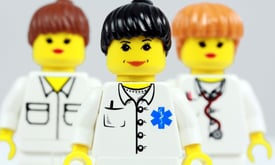 When you hear people talk about a Continuity of Care Document (CCD), funny enough, it’s actually usually a “document”. In reality, the specification for a CCD, according to Wikipedia, is “an XML-based markup standard intended to specify the encoding, structure, and semantics of a patient summary clinical document for exchange.” CCDs are important to patient’s treatment, but its original intention of being a way for pertinent patient information to be transferred one system to another has not yet been realized. So, when patients are referred to another physician or if CCDs are trying to be used to convert massive amounts of data from one EHR to a new EHR, the exchange of information is often not seamless.
When you hear people talk about a Continuity of Care Document (CCD), funny enough, it’s actually usually a “document”. In reality, the specification for a CCD, according to Wikipedia, is “an XML-based markup standard intended to specify the encoding, structure, and semantics of a patient summary clinical document for exchange.” CCDs are important to patient’s treatment, but its original intention of being a way for pertinent patient information to be transferred one system to another has not yet been realized. So, when patients are referred to another physician or if CCDs are trying to be used to convert massive amounts of data from one EHR to a new EHR, the exchange of information is often not seamless.
When you will look at your patient anew, having an overview of their history gives you a deeper perspective into what you learn from your own discovery process. But because CCDs are often delivered to you as multipage documents with a multitude of details throughout, are they as useful to you as they could be? In many cases, they are scanned in as one large document and, if you are lucky, attached to the patient record. Sorting through 10’s of pages of lab results, diagnoses, discharge summaries, immunizations, and other physicians’ notes can offer valuable information, so you attempt to do it. As a good care giver, you read through these as thoroughly as possible given what you are trying to ascertain from them.The original intention of the Continuity of Care Document can still be achieved however. Capturing the most valuable data therein as discrete data in your EHR so that you can graph it, analyze it, view it in the context of other related data and the data that you add for the same patient is very possible.
With Advanced Clinical Data Capture, extracting the information you need from these documents can now be highly automated and highly accurate so that the most valuable data is made easily accessible, saving time for care givers and increasing quality of care.